
Akkineni Nageswara Rao, widely known as ANR, was an Indian actor and film producer, primarily known for his works in Telugu cinema. Over his seven decade career, he starred in numerous landmark films, becoming one of the most prominent figures in the industry. Nageswara Rao received numerous accolades, including seven state Nandi Awards, five Filmfare Awards South and a Tamil Nadu State Film Award. He was honoured with the Dadasaheb Phalke Award, the highest recognition in Indian cinema, in 1990. Additionally, he was awarded the Padma Vibhushan (2011), Padma Bhushan (1988) and Padma Shri (1968), by the Government of India for his contributions to art and cinema.
Khammam is the city in Khammam district of the Indian state of Telangana. It is the fourth largest city in the state. It is the headquarters of the Khammam district and Khammam mandal also. It is located about 193 kilometres (120 mi) east of the state capital, Hyderabad, 61 kilometres (38 mi) from Suryapet, 120 kilometres (75 mi) from Warangal and also it is located about 121 kilometres (75 mi) North of the Andhra Pradesh state capital, Amaravathi. The river Munneru flows on the western side of the city. As of 2011 census of India, Khammam urban agglomeration has a population of 313,504. However, on 19 October 2012, the civic body of Khammam was upgraded to a municipal corporation. Post- upgradation to corporation, the population of Khammam was approximated to be 3,07,000. During 2014-2023 under BRS regime Khammam got a major changeover, roads expansion, Medical College, Engineering College, ITHub.

Rajahmundry, officially Rajamahendravaram, is a city in the Indian state of Andhra Pradesh and district headquarters of East Godavari district. It is the seventh most populated city in the state. During British rule, the district of Rajahmundry was created in the Madras Presidency in 1823. It was reorganised in 1859 and bifurcated into the Godavari and Krishna districts. Kakinada was the headquarters of Godavari district, which was further bifurcated into East Godavari and West Godavari districts in 1925. It is administered under Rajahmundry revenue division of the East Godavari district. The city is known for its floriculture, history, culture, agriculture, economy, tourism, and its heritage. It is known as the "Cultural Capital of Andhra Pradesh".

Kandukuri Veeresalingam is a social reformer and writer from the Madras Presidency, British India. He is considered as the Father of the Telugu Renaissance movement. He was one of the early social reformers who encouraged the education of women and the remarriage of widows. He also fought against child marriage and the dowry system. He started a school in Dowlaiswaram in 1874, constructed the 'Brahmo Mandir' in 1887 and built the 'Hithakarini School' in 1908 in Andhra Pradesh. His novel Rajasekhara Charitramu is considered to be the first novel in Telugu literature.

Telugu cinema, also known as Tollywood, is the segment of Indian cinema dedicated to the production of motion pictures in the Telugu language, widely spoken in the states of Andhra Pradesh and Telangana. Based in Film Nagar, Hyderabad, Telugu cinema has become the largest film industry in India by box-office revenue as of 2021. Telugu films sold 23.3 crore tickets in 2022, the highest among all Indian film industries. As of 2023, Andhra Pradesh has the highest number of movie screens in India.

Annapurna Studios is an Indian film studio facility founded in 1976 by the Telugu actor Akkineni Nageswara Rao. It is located on a 22-acre (8.9 ha) site in Banjara Hills, Hyderabad. The studio provides comprehensive production and post-production services.

Kasinadhuni Nageswararao, better known as Nageswara Rao Pantulu, was an Indian journalist, nationalist, politician, businessman, and a staunch supporter of Khaddar movement. He participated in the Indian independence movement and in the Indian National Congress party, including Mahatma Gandhi’s civil disobedience movement through salt satyagraha. He was conferred with the title Desabandhu by the people of Andhra Pradesh. He was a major financier of Congress activities in Andhra and Chennai and is also known for patenting Amrutanjan. He was conferred with the title Desoddhaaraka by the Andhra Mahasabha. In 1935, the Andhra University honoured him with Kalaprapoorna, an honorary doctorate of Literature.
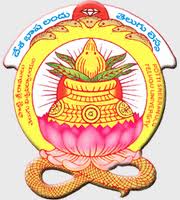
The Potti Sreeramulu Telugu University (PSTU) is one of the few Indian language universities in India.
International Telugu Institute was established by the Government of Andhra Pradesh in 1975 in acceptance of a resolution unanimously adopted by the delegates to the first World Telugu Conference held at Hyderabad. It was later merged with the Potti Sreeramulu Telugu University in 1985 and renamed as the International Telugu Centre.
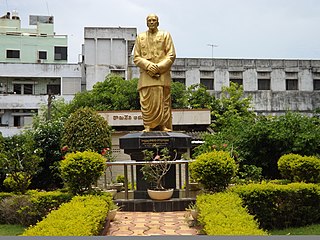
The Andhra Pradesh Library Association was established on 10 April 1914. It is the oldest state library association in India. The association is headquartered at Vijayawada. The association emerged with a noble mission of spreading literacy, knowledge, and awareness among the public. Since its inception, the association has been functioning with the sole aim of taking library movement to the public.
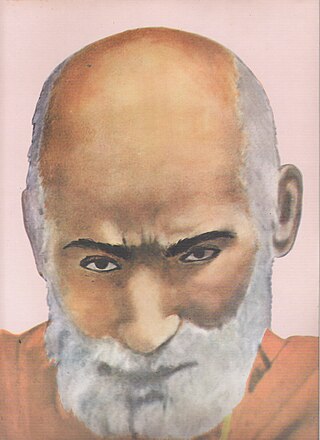
Chellapilla Venkata Sastry was a Telugu language poet laureate and scholar. He was one of the two poets known as Tirupati Venkata Kavulu and other being Divakarla Tirupati Sastry.

Nyapathi Subba Rao Pantulu was an Indian politician and social activist who served as a member of the Madras Legislative Council between 1893 and 1909. He was also one of the Triplicane Six, founders of The Hindu, and General Secretary of the Indian National Congress from 1914 to 1917.
Nalam Krishna Rao was an accomplished Telugu writer, magazine editor and social activist. He was born at Mandapeta in East Godavari district on 18 January 1881. He founded Gowthami Grandhalayam at Rajahmundry in 1898. Rao supported eradicating the social evil of the caste system and strongly supported widow remarriages. Every year, Telugu University presents endowment awards to writers, artistes and critics. Nalam Krishna Rao Memorial Award is one among those, which is given for Best Women Writer in Telugu.
Andhra Patrika was an Indian Telugu-language newspaper founded by Kasinathuni Nageswara Rao on 9 September 1908. It was initially a weekly publication and later transformed into a daily newspaper. It played an influential role in India’s nationalist movement. The newspaper had a lasting impact on the development of modern Telugu language and was instrumental in shaping the cultural and political identity that contributed to the creation of Andhra Pradesh. Andhra Patrika continued publication until it closed in 1991.
Sri Balusu Prabhakara Buchi Krishna Satyanarayana Rao,, was a Telugu Indian industrialist, politician, and the zamindar of Kapileswarapuram. He was a Union Minister and active in the Circar districts of India. He served as Minister of State for Agriculture in the Vajpayee government for two years between 1999 and 2001. He was elected to the AP Legislative Council from the North Circar Districts Graduates Constituency in 1958 and 1980. His last rites were performed at his native village.

Digavalli Venkata Siva Rao, or Digavalli Śivarāvu, was a lawyer, historian and Telugu writer from Vijayawada, Andhra Pradesh. He is the author of forty-two books and some 300 articles written between 1924 and 1987. Some of his works are available in the Indian Digital Library.
Rayi Ratna Sundara Rao was a prolific writer, theologian and comparative religion scholar who once was the principal of the Gurukul Lutheran Theological College, Chennai, affiliated to India's first university, the Senate of Serampore College (University).
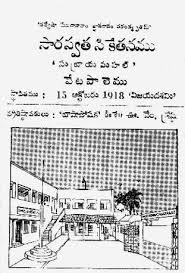
Saraswata Niketanam Library is located in Vetapalem, Andhra Pradesh, India. It is one of the oldest libraries in India, and has on display a rare collection of Palm leaf manuscripts and paper written in Hindi, Telugu, Sanskrit and a few other languages indigenous to India. The collection comprises well over 90,000 volumes, with a majority of these on display. The library has a complete catalogue of holdings, which is being made available online. Some rare holdings can be viewed on site by prior arrangement.
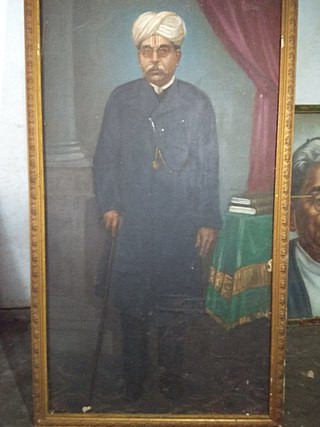
Raja Kanchumarthi Ramachandra Rao was a zamindar of Dharmavaram. He is notable for the development of Rajahmundry. He was the son of Kanchumarthi Narasayya Naidu.

Paturi Nagabhushanam was described as the doyen of the Andhra Library Movement from Andhra Pradesh, India. Paturi was associated with the national independence movement and an ardent follower of Gandhiji. His contributions are noteworthy - in spreading library movement in the state of Andhra Pradesh among the public, strengthening Andhra Pradesh Library Association propagating adult literacy, the establishment of library school for imparting training to library workers and giving library education under State government certification and publishing books, periodicals, LIS textbooks. He is the founder of Sarvottama Granthalayam in Vijayawada.















